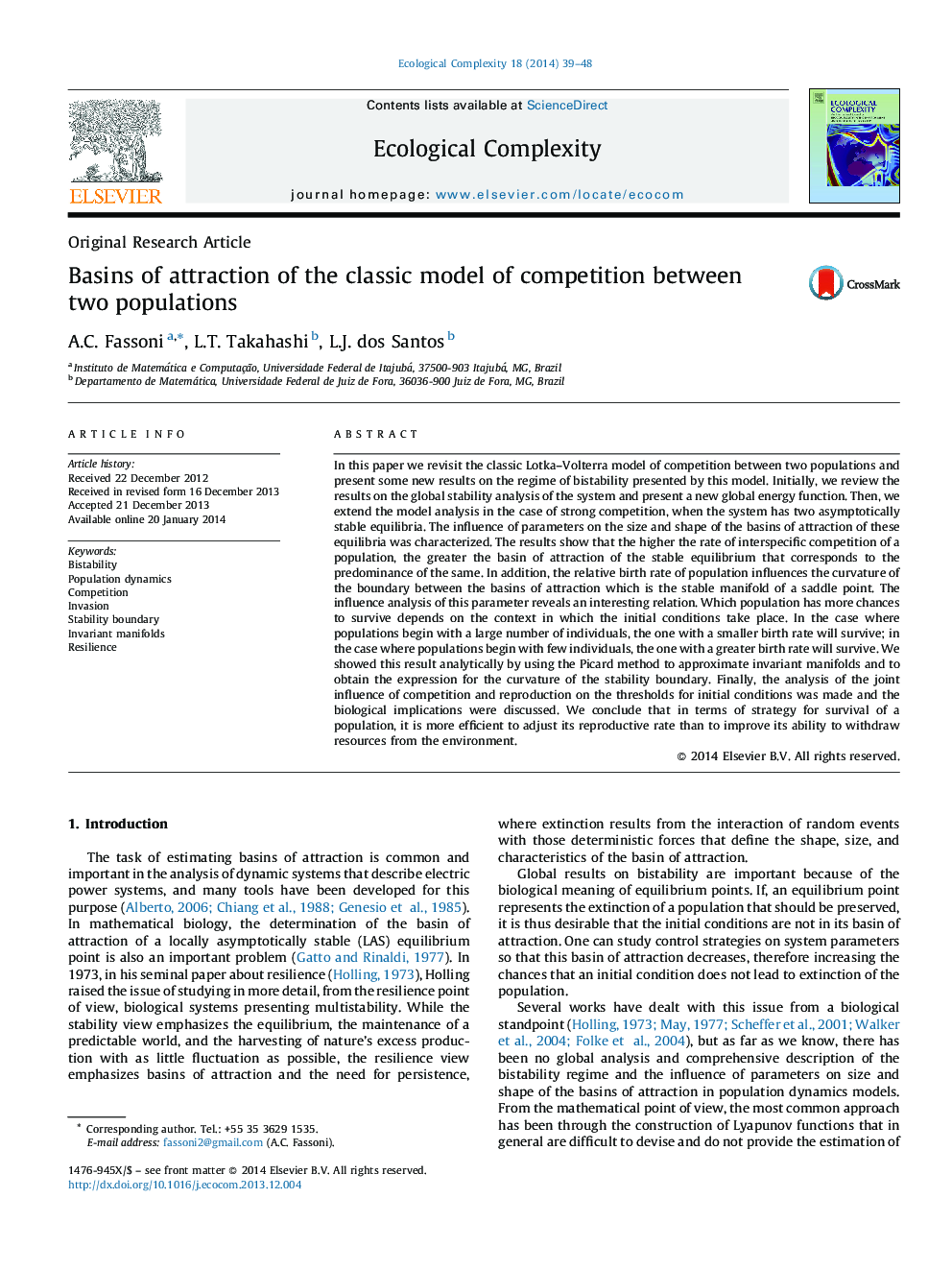| کد مقاله | کد نشریه | سال انتشار | مقاله انگلیسی | نسخه تمام متن |
|---|---|---|---|---|
| 4372454 | 1617096 | 2014 | 10 صفحه PDF | دانلود رایگان |
• The classic Lotka–Volterra model of competition between two populations is revisited.
• Global results on the bistability regime and the basins of attraction are presented.
• Influence of parameters on size and shape of basins of attraction was characterized.
• In struggle for life it is more efficient to adjust reproductivity than competitivity.
• The better reproduction strategy depends on the initial conditions.
In this paper we revisit the classic Lotka–Volterra model of competition between two populations and present some new results on the regime of bistability presented by this model. Initially, we review the results on the global stability analysis of the system and present a new global energy function. Then, we extend the model analysis in the case of strong competition, when the system has two asymptotically stable equilibria. The influence of parameters on the size and shape of the basins of attraction of these equilibria was characterized. The results show that the higher the rate of interspecific competition of a population, the greater the basin of attraction of the stable equilibrium that corresponds to the predominance of the same. In addition, the relative birth rate of population influences the curvature of the boundary between the basins of attraction which is the stable manifold of a saddle point. The influence analysis of this parameter reveals an interesting relation. Which population has more chances to survive depends on the context in which the initial conditions take place. In the case where populations begin with a large number of individuals, the one with a smaller birth rate will survive; in the case where populations begin with few individuals, the one with a greater birth rate will survive. We showed this result analytically by using the Picard method to approximate invariant manifolds and to obtain the expression for the curvature of the stability boundary. Finally, the analysis of the joint influence of competition and reproduction on the thresholds for initial conditions was made and the biological implications were discussed. We conclude that in terms of strategy for survival of a population, it is more efficient to adjust its reproductive rate than to improve its ability to withdraw resources from the environment.
Journal: Ecological Complexity - Volume 18, June 2014, Pages 39–48
